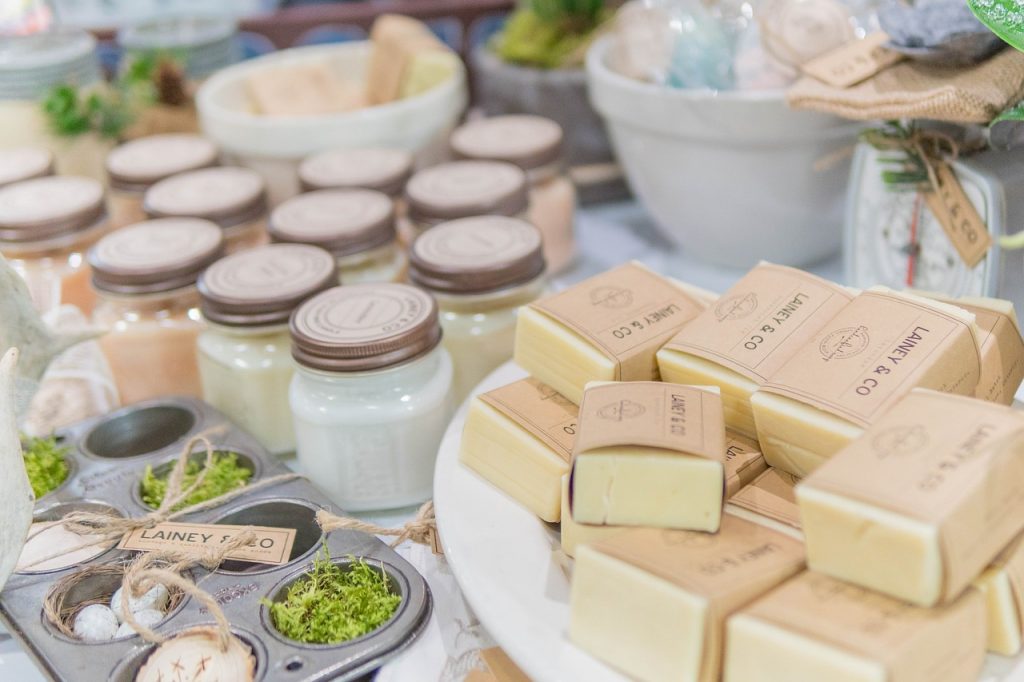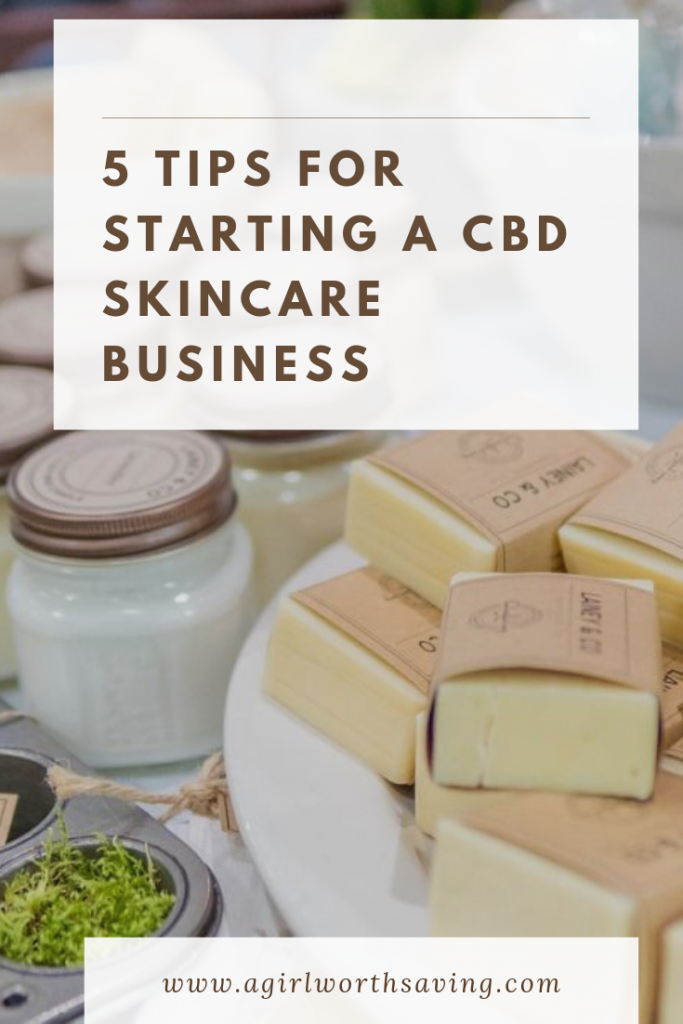This post contains affiliate links. Click here to read my affiliate policy.
Last Updated on October 7, 2023

If you are reading this, then perhaps you already make cosmetics and wish to add a line of CBD skincare products to your range. Or, maybe you’re just getting started in the beauty industry and want to focus your efforts on the booming CBD skincare market.
Whatever stage you are at in the development of your business, one thing is certain: the demand for CBD in general – and CBD skincare in particular – is showing no sign of abating. In recent years, CBD has become the darling of the legal cannabis industry.
As a matter of fact, the growth rate of CBD sales is outpacing that of cannabis. In the process it’s also smashing all previous projections. One particular estimate from the Brightfield Group expects the CBD market to soar to a mind-blowing 22 billion US dollars by 2020. (1)
In particular, the singing into law of the Farm Bill 2018 (2) should remove hemp from the list of scheduled substances, completely clearing the way for hemp-derived CBD products such as CBD skincare. So, if that’s not enticing enough to get you making CBD soap bars, what is?
With this in mind, we’ve put together a list of tips to help you successfully launch your own CBD skincare business.
Tip No.1: Find a CBD merchant account and payment processor
Before you even get started with creating a brand or designing your products, it’s absolutely crucial to consider how you are going to take payments once you are up and running.
Most people immediately think of PayPal when it comes to taking payments online or in person. However, it’s a little-known fact that the “mainstream” payment processors (including Stripe and Square) do not accept CBD-related businesses.
Worse again, we’ve heard of horror stories when certain applications for CBD businesses manage to slip through the initial sign-up process, which is – let’s face it – not very thorough! New business owners begin trading and then several days or weeks later, without prior warning, they have the shock of discovering that their account has been shut down and their funds frozen.
A great brand and amazing products are of no use whatsoever if your customers can’t pay for them? Therefore, securing an account with a reliable CBD merchant account and payment gateway provider should be at the very top of your list. If you have a physical store, make sure to ask if they offer in-store cannabis credit card processing or cashless ATMs for the cannabis industry.
Make sure to inquire about their sign-up fee (if any), rolling reserves (a percentage of your turnover which is held for a given period of time to cover any potential disputes or chargebacks) and transaction fees (which often has a fixed component and a percentage-based component, calculated on the total value of the transaction).
Tip No.2: Chose a niche
As a quick glance at an average person’s bathroom would suggest: the cosmetics industry is massive! It covers everything from skin care, body care, hair care, oral care to categories such as fine fragrances or colour cosmetics.
It’s an industry dominated by multibillion-dollar juggernauts like L’Oréal, Unilever, Estée Lauder, P&G or Coty for example. (3) These companies have huge resources and tremendous power to command the market. They’re masters in the art of rapidly identifying trends, building relevant brands and products, placing them throughout their global distribution networks and then opening the advertising floodgates.
Any attempt to tackle these well-oiled machines face on is almost guaranteed to fail. Therefore, to be in with a sniff of success, it’s imperative to focus your resources on a specific niche.
If you’ve identified the CBD skincare market as an opportunity, you’re already half way there – perhaps without knowing it! Indeed, the CBD skincare market is already a niche within the wider cosmetics market. However, to increase your chances further, you should consider targeting an even smaller niche such as CBD soaps or CBD bath bombs for example.
Questions you should ask yourself are: “Is there a demand for this type of product?” and “Are there competing products already on the market?”. Ideally, you want to find a niche with an existing demand and low competition.
Remember, you can’t be everything to everyone! However, if you do few things, but do them all extremely well, you will find your following. Then, you can build on your success to progressively expand your range into neighbouring product categories.
Tip No.3: Build a strong brand
In the age of both traditional and digital marketing, we are constantly bombarded with messages – most of them advertising. Digital marketing experts Red Crow Marketing have even estimated that the average American is exposed to around 4,000 to 10,000 advertisements per day. (4) For a new brand to succeed, it’s imperative to cut through the clutter.
A huge part of standing out in a crowded market comes down to the distinctiveness of your brand. A distinctive brand is a lot more than a catchy name and a nice logo. It must have a unique identity and personality, a unique set of values and – especially when it comes to millennials – it must stand for something. Your brand should also be synonym with one or several unique selling points (USP), to help set it apart from the herd.
Finally, a great brand is consistent across all consumer touch points. All aspects of your brand, from your website to your packaging or from your advertisements to your staff’s uniforms, must be consistent with one another. This will help build a coherent brand platform and create an easily identifiable image for your target customers.
Tip No.4: You’re not on your own
It’s pretty common for people to have that Eureka! moment when they think they’ve just invented the best thing since sliced gluten free sourdough bread. However, the soufflé often falls flat when it comes to execution.
Indeed, most people think that because they aren’t cosmetic scientists or don’t own a soap factory, they can’t follow through with their ideas. The same holds true for people looking at getting started in the CBD skincare market.
This is simply not true. You might not know this, but when you pick up a bottle of shampoo or a shower gel at your local supermarket, the chances are that the brands under which they are sold do not manufacture those products themselves.
In most cases, cosmetics brands actually outsource their manufacturing to third party suppliers. This is often referred to as private label manufacturing. In the US alone there are hundreds, if not thousands, of private label suppliers. These companies specialize in developing and producing consumer goods for their clients. They will be able to help you formulate and then manufacture the type of CBD cosmetic product you have in mind.
Moreover, purchasing from reputable manufacturers with GMP and ISO certifications, can give you the peace of mind that your products are fully compliant with FDA regulations and are safe for your customers.
Make sure to inquire about their packaging options, minimum order quantities (MOQs), lead times and also if they have fixed set up fees (some companies charge a flat fee for certain things such as product formulation or artwork origination, on top of the cost charged for each item produced).
Tip No.5: Reach out to influencers
If you’ve reached this stage, you’re ready to launch. Or perhaps you already have. The next step in the launch process is to make people aware of your new CBD cosmetics.
You could of course opt to go down the traditional route, and seek to advertise in the press, over the radio, on billboards or if your budget allows, on TV. However, the advent of digital media has revolutionized the way in which we consume media. A recent whitepaper by AppNexus suggests that by 2021, digital ad spend is expected to represent a majority of all U.S. ad spend. (5)
Indeed, consumers are spending more and more time online, and less time-consuming traditional media. Therefore, if you want to reach modern-day consumers, your brand must be online too.
However, when it comes to promoting your CBD products online, your options are slightly limited. For example, Google and Facebook – two of the largest advertising networks in the USA and worldwide – do not authorize the paid promotion of CBD products.
So, you need to be creative!
A sure-fire way of putting your new products in front of your target audience is to identify the influencers they follow on social media. Each niche has a host of influencers which have gained huge followings for their expertise in their field. Influencers have the power to make or break a brand.
Start by identifying prominent influencers in the beauty industry at large, and in the CBD or natural skincare segments in particular. Then reach out to them on their social media profiles. If they provide their email address, use this channel instead. Introduce your business, explain what it is you do and why you are special. Don’t be shy! Also offer to send them a giftbox containing your new CBD product range, as well as any promotional materials you might have developed.
Influencers are always looking for new brands and products to review and will be thankful for your approach. If you’ve done your homework well, and if you’ve followed tips 2, 3 and 4 above, you should be in with a chance of getting a scintillating review.
Sources:
- https://www.brightfieldgroup.com/
- https://en.wikipedia.org/wiki/2018_United_States_farm_bill
- https://blog.technavio.com/blog/top-10-cosmetics-companies
- https://www.redcrowmarketing.com/2015/09/10/many-ads-see-one-day/
- https://www.appnexus.com/sites/default/files/whitepapers/guide-2018stats_2.pdf


